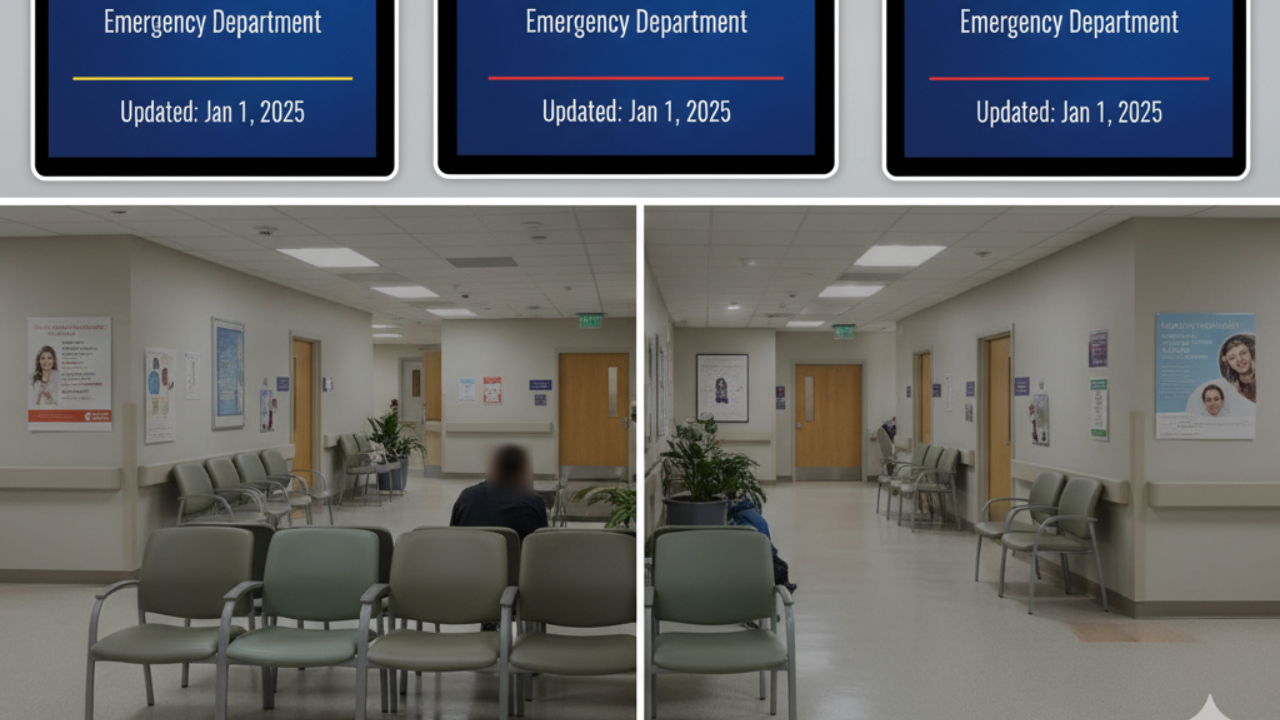
Sacramento Helicopter Crash Leaves Three Crew Memb
A medical helicopter crashed on Highway 50 in Sacramento; three crew members are critically injured,

Healthcare wait times remain one of the biggest challenges in New Brunswick’s hospital system. In 2025, patients in Fredericton, Moncton, and Saint John continue to experience longer delays in emergency departments, surgical care, and specialist consultations. The situation reflects a mix of rising demand, limited resources, and systemic inefficiencies across the province’s health network.
The average emergency room (ER) wait time across major hospitals in New Brunswick has increased compared to previous years. In 2025, patients in Fredericton’s Dr. Everett Chalmers Regional Hospital typically wait around six hours before being seen or admitted. Moncton Hospital has some of the province’s longest waits, averaging about seven hours, while Saint John Regional Hospital reports average waits of six to seven hours.
These figures represent the total time from arrival to either admission or discharge, not just the time until initial assessment. Overcrowded ERs, staff shortages, and bed unavailability all contribute to these extended waits.
Even after seeing a doctor, many patients wait several more hours to be admitted to a hospital bed. On average, the wait from the decision to admit to being transferred to an inpatient room ranges from 15 to 18 hours. This backlog stems from bed shortages, staffing gaps, and increased hospital occupancy due to an aging population.
Patients with complex conditions or those requiring specialized care, such as cardiac or surgical services, may experience even longer waits before being moved out of emergency departments.
New Brunswick continues to face significant surgical and specialist appointment delays in 2025. Many non-urgent surgeries take six months or more from referral to completion. Some patients report waiting over a year for orthopedic, cataract, or general surgery.
The province’s median wait time to see a specialist after referral remains around 26 weeks, followed by another similar period before treatment. These combined delays reflect both the shortage of healthcare professionals and the ongoing strain on operating room schedules.
Several key issues drive the prolonged healthcare wait times in Fredericton, Moncton, and Saint John:
Staff shortages: Nursing vacancies, physician burnout, and difficulty recruiting specialists continue to stretch existing teams.
Aging population: Older patients often have multiple chronic conditions, increasing hospital stays and follow-up care demands.
Bed shortages: Limited inpatient capacity results in “patient boarding” in ERs while waiting for a bed to open.
System inefficiencies: Administrative processes, referral delays, and lack of integrated electronic health systems add to the problem.
Rural-urban patient flow: Patients from smaller towns often travel to these three major hospitals for specialized care, increasing volume and congestion.
The provincial government has identified healthcare stabilization as a top priority for 2025. Initiatives include hiring international nurses, expanding virtual care programs, and investing in community clinics to ease pressure on hospitals. The long-term goal is to improve patient flow, reduce bottlenecks, and ensure equitable access to timely medical services.
While these measures may not produce immediate results, they aim to create a more efficient and sustainable healthcare system for New Brunswick residents.
Use urgent care clinics or telehealth for non-emergency situations to reduce ER demand.
Follow up regularly with family physicians to avoid unnecessary hospital visits.
Plan elective procedures early and stay informed about scheduling changes.
Keep medical records organized to avoid delays during hospital admissions.
Be patient but proactive—ask about estimated wait times and alternative options.
Disclaimer:
This article is written for informational and educational purposes only. Data is based on current healthcare trends and public reports available as of 2025. Wait times vary depending on patient needs, hospital resources, and policy changes. Always consult your healthcare provider or local health authority for the most accurate, up-to-date information.